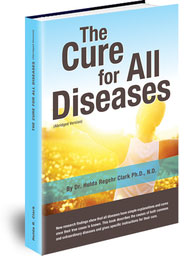 As one of the most popular flooring choices in the United States, carpet is installed in upwards of 70 percent of U.S. homes. It’s a soft, cozy way to warm up your rooms, but there’s a dark side to carpeting that few people are aware of …
As one of the most popular flooring choices in the United States, carpet is installed in upwards of 70 percent of U.S. homes. It’s a soft, cozy way to warm up your rooms, but there’s a dark side to carpeting that few people are aware of …
You know the smell of new carpeting when it’s first installed? Like “new car smell,” “new carpet smell” is actually an outgassing of numerous chemicals into your home’s air. And the risks only continue from there …
5 Carpet Health Risks Every Homeowner Should Know
5. Serious Environmental Impacts
More than 4 billion pounds of old carpet enter landfills in the United States every year, making up more than 1 percent by weight and about 2 percent by volume of all municipal solid waste.[i] Because of the variety of materials present in carpeting, recycling is often not an option, so the disposal of old carpet represents an extreme environmental concern.
4. Sick Building Syndrome (SBS)
SBS is a condition in which build occupants complain of symptoms such as cough, chest tightness, fever, chills, and muscle aches, which appear to be linked to time spent in a building. In one study, students in a school with wall-to-wall carpeting reported eye and airway symptoms, face rashes, headache, abnormal tiredness and a sensation of being electrostatically charged far more than students in building with hard floor coverings. When the carpeting was removed, many of the students’ symptoms resolved.[ii]
3. Indoor Air Pollution
Carpet is a synthetic material, made from petroleum byproducts, nylon, acrylic, PVC and more. These substances outgas toxic chemicals such as volatile organic compounds (VOCs) and formaldehyde into your home’s air. It’s because of synthetic materials like carpeting that indoor air pollution may be 2 to 5 times — and occasionally more than 100 times — higher than outdoor pollutant levels.[iii]
Aside from the chemicals inherent in the carpeting materials, carpet is a known repository for chemicals from your home. Cleaning chemicals, cigarette smoke, pesticides, fumes from mothballs or deodorizers … all of these can fall to the floor and linger in carpeting, from which it is slowly released over a long period of time ranging from a few days to months or years.[iv] Cleaning will do nothing to remove such toxins, as they typically migrate into the padding below.
Indoor air pollution is a health risk. For instance, VOCs have been linked to cancer and damage to the liver, kidneys and central nervous system. While short-term exposure to indoor air pollutants is linked to asthma, headaches, dizziness, fatigue, and eye/nose irritation, long-term exposure is associated with respiratory diseases, heart disease, and cancer.[v]
2. Mold
Carpet can absorb and hold moisture, making it a prime spot for biological pollutants, like mold, to grow. This is especially true if the carpet is installed in a bathroom or other area exposed to lots of moisture, or if it’s placed over a concrete floor, but even seemingly clean carpeting and its padding can harbor mold and other fungi.
In fact, one study found that Bedroom carpets devoid of any moisture damage or problems actually provide a habitat with enough moisture to support fungal growth — even despite the lack of an obvious moisture source.[vi]
Exposure to mold is a known source of allergies and can worsen symptoms of asthma and even cause infectious disease, immunosuppression and cancer (from a specific type of fungus called mycotoxins).
1. Bacteria and Viruses
Think about all of the places you walk in on any given day — a public restroom, your office, the street, subway, restaurants, day care centers, doctors’ offices. All of these are teeming with bacteria and other biological agents that get transferred onto your shoes and then, when you come home, onto your carpet.
According to one expert, Phillip Tierno, director of Clinical Microbiology and Immunology, NYU, your carpet may contain 200,000 bacteria per square inch, which would make it 4,000 times dirtier than your toilet seat. He says hundreds of thousands of bacterial species live in carpets, including E. coli, salmonella, staphylococcus and more.[vii] It’s bad enough if you’re an adult walking barefoot on said carpet, but for babies and toddlers, who crawl around on the carpet and put their hands in their mouths, it can be quite dangerous.
Tips for Safer Flooring …
There are “greener” flooring choices available, like bamboo, cork and hardwood from a sustainably managed forest. There are also sustainable carpets available made from natural fibers with little or no chemical treatment, and pads made from recycled cotton padding instead of petroleum products.
If you do decide to install “typical” carpeting, be sure to do the following to reduce your risks:
- Lay the carpet out somewhere other than in your home for a few days or, preferably, a few weeks. This will help it let out the initial large doses of VOCs and other chemicals before it’s brought into your home.
- Skip the stain resistant and anti-static treatments. These will only add more chemicals to your carpet, which means more pollution to your indoor air.
- Ventilate during installation — and after: Installation and the first few days/weeks following are when the highest volume of chemicals will be released. Be sure your home is properly ventilated (open windows, etc.) during this time.
- Avoid moisture: Although mold and fungi can grow even on seemingly dry carpets, it’s important to dry your carpet out thoroughly following any spills or moisture to help reduce mold and bacterial growth.
Fight Back Against Environmental Pollutants Naturally (FREE!)
 Bacteria, fungi, mold and viruses in your environment are at the root cause of countless chronic diseases and other health conditions, but if you can get rid of these toxins from your body, and prevent them from re-invading by eliminating pollution and toxins from your environment, then you can rid your body of disease and pain to restore your health.
Bacteria, fungi, mold and viruses in your environment are at the root cause of countless chronic diseases and other health conditions, but if you can get rid of these toxins from your body, and prevent them from re-invading by eliminating pollution and toxins from your environment, then you can rid your body of disease and pain to restore your health.
Though it may sound daunting, the process is actually very simple, and is outlined, in five simple steps, in Dr. Hulda Clark’s natural health bible, “The Cure for All Diseases.”
It’s a given that you’re going to come across pollutants in your every day life, but with a FREE copy of this ground-breaking book, you can overcome, and prevent, their established impacts on your health — and learn how to remove them from your home environment, for good.


Hi Jesse, I’m with you on the carpet issue, been trying to convince my hubby for years to get rid of it. We are planning to replace ours with bamboo next year.
But, I’m with Bill on the Facebook issue, I recently cancelled my account because I was sick of all the bogus emails they sent me every day, lying about my friends to try to get me to visit the site (I rarely went on there). I couldn’t find a way to delete my account on the site, so googled it, and now I’m out, well nearly, they give you 2 weeks to change your mind…. Cult is the word to describe them.
Cheers Jewel
How do rugs compare with fitted carpet? Any stats?
Would they have 1/4000th of the pollution of fitted carpet?
After all one can take them outside and beat or shake them.
Once they are under heavy furniture however like dining tables, bookcases and cupboards you need to move house to get at them. They usually last a lot longer than fitted carpet and if made by hand will not likely have VOC’s in them. And in flats you will get along better with your neighbours if you have carpets.
The Top 5 Health Risks of Carpet are and/or can be both equally determental as well as benefital of, to and for your health. Everything and/or anything are and/or is a HEALTH RISK, even living has health risks and the biggest HEALTH RISK is MANKIND AND/OR OURSELVES.
Ammonia is an antagoniser of formaldehyde. If you place a bowl of amonia in a closed off room for a few days(you may need to replace as the amonia disperses) it will negate the formaldehyde. Formaldehyde is an antagonist to mould so be very carefull of buying anti-mould sprays and thinking you can spray away without poisoning yourself with formaldehyde. BEWARE VACCINES also contain formaldehyde and all artifitial sweetners containig aspartame turn into formaldehyde within minutes of entering the body.